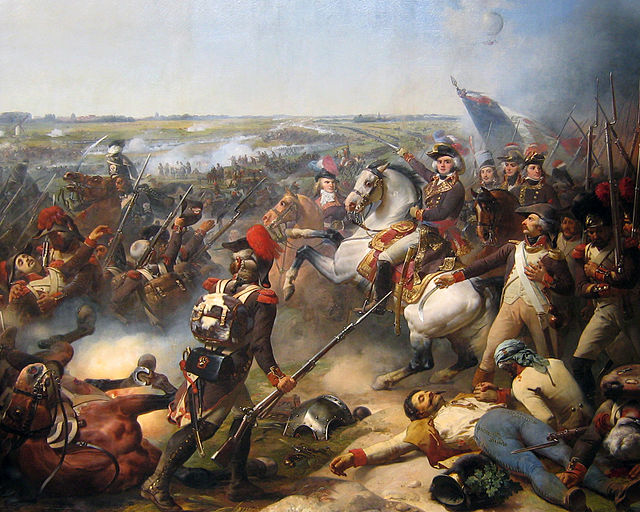The Battle of Wattignies saw a French army commanded by Jean-Baptiste Jourdan attack a Coalition army directed by Prince Josias of Saxe-Coburg-Saalfeld. After two days of combat Jourdan's troops compelled the Habsburg covering force led by François Sébastien Charles Joseph de Croix, Count of Clerfayt to withdraw. The War of the First Coalition victory allowed the French to raise the siege of Maubeuge. At a time when failed generals were often executed or imprisoned, Jourdan had to endure interference from Lazare Carnot from the Committee of Public Safety. The village, renamed Wattignies-la-Victoire in honor of the important success, is located 9 kilometres (6 mi) southeast of Maubeuge.
Battle of Wattignies by Eugène Lami
Jean-Baptiste Jourdan
Count Bellegarde
Wattignies church
Jean-Baptiste Jourdan, 1st Count Jourdan, was a French military commander who served during the French Revolutionary Wars and the Napoleonic Wars. He was made a Marshal of the Empire by Emperor Napoleon I in 1804. He was also a Jacobin politician during the Directory phase of the French Revolution, serving as member of the Council of Five Hundred between 1797 and 1799.
Portrait as Marshal of the Empire
Jourdan's birth home in Limoges, with a commemorative plaque installed during the Second Republic
Detail of an equestrian portrait of Jourdan by Johann Dryander, 1794
The Battle of Fleurus in 1794, won by Jourdan over Coalition forces led by the princes of Coburg and Orange. Painting by Jean-Baptiste Mauzaisse (1837)








